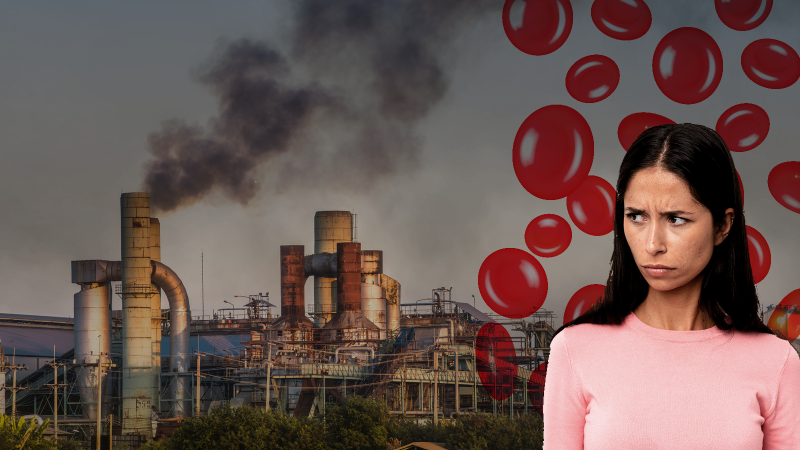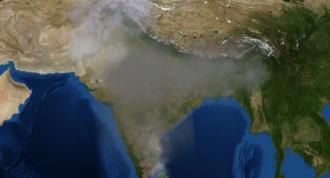
India has one of the highest rates of iron deficiency, or anaemia, in the world. As someone who has suffered from it and seen close family members affected by it all my life, I can tell you that an anaemic person feels like a car running on low fuel. The amount of iron in the body affects the levels of haemoglobin — a protein in the blood responsible for providing enough oxygen to all the organs and muscles. Oxygen is the fuel which drives the whole body; lower haemoglobin results in a lower oxygen supply. Just like a car might huff and puff on low oil, anaemic people can experience weakness and shortness of breath. Trust me; it is not pleasant!
Though a diet lacking in iron is a significant cause of anaemia, it can also be caused by other factors such as genetic disorders, parasitic infections, and chronic diseases. Surprisingly, air pollution can also increase the risk of developing anaemia. In a recent study, a multi-institute team of researchers led by IIT Delhi investigated how pollution in an area is related to the prevalence of anaemia among Indian women of reproductive age (15-49 years). The study was published in the journal Nature Sustainability.
The National Family and Health Survey conducted in 2015-16 found that more than half the women of reproductive age (15–49 years) suffer from anaemia. Women are especially prone to it due to blood loss through menstruation. Haemoglobin deficiency numbers are even worse for children under five. That makes sense, as the health of young children is closely related to their mothers’ health. In fact, studies suggest that tackling women’s anaemia can help reduce all forms of malnutrition.
India has launched the POSHAN Abhiyaan programme to reduce the rate of anaemia in women of reproductive age with an aim to increase the population’s iron intake. But iron-sufficient diets might not be enough. Exposure to pollution can cause inflammation in the body, which restricts its ability to absorb iron.
The researchers looked at a particular kind of air pollutant, PM2.5, which are inhalable particles nearly 30 times smaller than the width of a human hair. They then analysed how this pollution could have affected anaemia rates in the population. For this, they collected and used data on both pollution and anaemia rates from 636 districts covering most of India. Their results show that increasing even 0.01 milligram/m3 of PM2.5 in the atmosphere caused anaemia prevalence to increase by more than 7%.
Among the different PM2.5 components, the researchers found that sulphates and black carbon are more likely to cause anaemia. Going a step further, they also considered the effect of other factors on anaemia prevalence, such as socioeconomic, education, and health levels, together with exposure to air pollution.
The researchers then analysed the different sources of PM2.5 pollution, comparing the impact of indoor (domestic emissions) and outdoor sources (power, transport and agriculture). They found that even though the domestic sector contributed the most to PM2.5 pollution, the emissions from the industrial sector show the highest impact on haemoglobin levels in the population.
In its ‘anaemia free’ national mission, the Government of India has set a target of anaemia prevalence of less than 35% in women of reproductive age. Sadly, less than one-tenth (61) of the 636 districts evaluated meet the target. The researchers suggest that decreasing air pollution can help tackle the country’s anaemia problem.
The Government of India has already set the ball rolling through three national social programmes. These are aimed at reducing PM2.5 levels (National Clean Air Programme) and providing clean fuel (Pradhan Mantri Ujjwala Yojana) and electricity (Deen Dayal Upadhyay Grameen Jyoti Yojana) to households. If successful, these measures can reduce PM2.5 levels to the acceptable national air quality standard. The researchers estimate that this can lead to more than tripling the number of districts to 186 with below 35% anaemia prevalence.
We have an opportunity to kill two birds with one stone. We can reduce our environmental pollution and improve women’s health at the same time. As far as solutions go, there couldn’t be a cleaner one than this.






